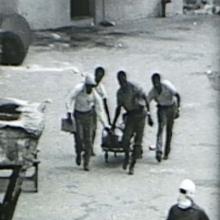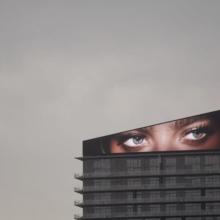I was originally drawn to a career in film because of the power of storytelling to influence and inspire. But storytelling, I have since realized, is not limited to any particular medium. From the stories we form about ourselves in childhood to the stories we absorb from our environment, personal narrative is the foundation of our mental health. It impacts the way we view the world and how we imagine its possibilities. I have spent the majority of my career in film distribution, helping artists tell their stories. I began my career in the studio world but ultimately left to work in social
Latest Posts
Last June my debut feature film Pray Away premiered at the Tribeca Film Festival. It is a career milestone I am grateful for, and one I’ll never forget for many reasons. This includes having experienced the majority of said premiere overwhelmed and half-topless in a production trailer behind the big screen. Why, you ask? I was pumping milk for my then two-and-a-half month baby. In these first few months of new parenthood, I've learned that behind the countless “moms in film” panels and hashtags, there is not enough tangible support in our industry or culture for parents. I felt this having to
Screen Time is your curated weekly guide to excellent documentaries and nonfiction programs that you can watch at home. It’s Noirvember! Kick off your celebrations with the " Film Noir" episode of PBS’ American Cinema series, which is now available on YouTube. Directed by Jeffrey Schon and hosted by John Lithgow, the documentary walks the audiences through the history of film noir and includes interviews with several filmmakers from across cinematic ages. We’ve known Wuhan for a variety of reasons over the last few years. Back in 2007, filmmaker Weijun Chen made Please Vote For Me, which is
IDA has announced the 37th Annual IDA Documentary Awards honorary award recipients.
Fifty years ago, an uprising at a prison facility in upstate New York changed the course of history. And yet today the word "Attica" might more easily bring to mind Al Pacino’s infamous line from Dog Day Afternoon. Which is a shame—although also perhaps inevitable. For what turned out to be the largest prison rebellion in US history—culminating in "the deadliest violence Americans had inflicted on each other in a single day since the Civil War"—was also a media spectacle that played out for five days across TV screens around the world. But for the incarcerated—and all the families on the
Essential Doc Reads is our curated selection of recent features and important news items about the documentary form and its processes, from around the internet, as well as from the Documentary magazine archive. We hope you enjoy! This one’s not about documentaries specifically, but Hyperallergic’s Nadine Smith writes an excellent piece documenting the evolution of military recruitment ad films in the USA, which often borrow from documentary practices. Though military newsreels and documentaries from past eras were their own kind of advertising, the film industry began producing literal
IDA has announced grants, totaling $105,000, to five films through its Pare Lorentz Documentary Fund on the theme, “Challenging White Supremacy.” IDA also revealed the 2021 recipients of the Logan Elevate Grants to filmmakers Ilse Fernandez and Rintu Thomas, with a grant of $25,000 each.
Screen Time is your curated weekly guide to excellent documentaries and nonfiction programs that you can watch at home. The National Film Board of Canada’s annual American Indian Film Festival is back, and is running November 5–13, 2021. In its 46th year, all the films in the virtual program will be available for streaming in the US. While everything on the program is recommended viewing, don’t forget to check out the nominated doc features: Elle-Máijá Tailfeathers’ Kímmapiiyipitssini: The Meaning of Empathy, Campbell Dalglish, Dr. Henrietta Mann’s Savage Land, Tanya Talaga’s Spirit to Soar
Essential Doc Reads is our curated selection of recent features and important news items about the documentary form and its processes, from around the internet, as well as from the Documentary magazine archive. We hope you enjoy! Hyperallergic’s Peter Kim looks at two recent films—one documentary and a fictionalized narrative—and wonders why and how consent stops being a priority for filmmakers telling these stories. The one unanimous sentiment seems to be that this controversy has marred a meaningful opportunity for raising awareness and activism. However, the film’s political messaging is so
The 59th New York Film Festival, which ran from September 24 to October 10, was back home at Lincoln Center this year, as in-person screenings and talks took over Alice Tully Hall, Walter Reade Theater and the Elinor Bunin Munroe Film Center, along with nearby Damrosch Park. Partner venues, spread across the city and beyond, included Maysles Documentary Center, BAM Cinemas, Anthology Film Archives, Pleasantville’s Jacob Burns Film Center—all of which played selections of the festival’s lineup of narrative and documentary features and shorts, revivals, and experimental works. This year’s









